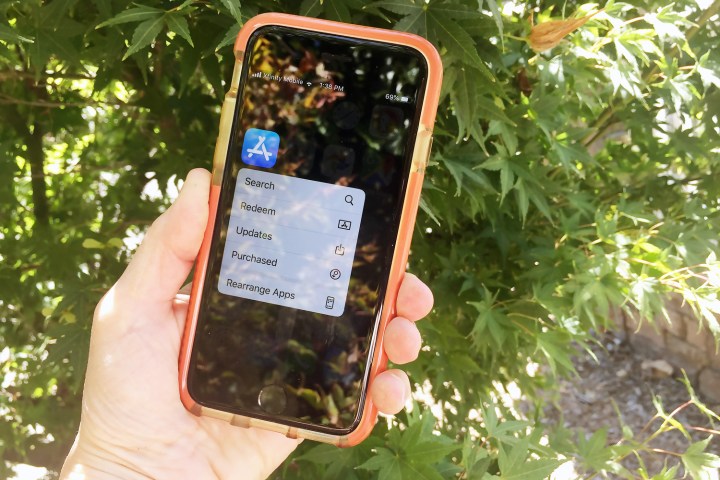“With [3D Touch], it was only at the moment where we finally got a design experience that’s like, ‘Yes! This is what we want,’” said Craig Federighi, senior vice president of Software Engineering, in 2015. ‘This is what we want” is the exact expression I missed while using the iOS 16 Developer Beta that rolled out after Apple’s keynote for WWDC 2022. It might be time to do it all over again. Apple has the formula, and with a little execution, it can form an outstanding user experience.
Before we proceed, it’s crucial for you to understand what 3D Touch is. Apple introduced this feature with the

iOS is only getting more complicated
Needless to say, 3D Touch is not the most successful tech advancement that Apple has made in the last decade. In fact, it had a forgettable run. But I believe it’s time for the feature to return on iPhones in the form of Force Touch.
Apple’s iPhone operating system, iOS, is more feature-rich than ever, which sometimes translates to a cluttered experience. Introducing more features means doing more things with the same actions. For instance, when you long-press an image in the Photos app in iOS 16, it either looks for a living being or text to select. Both of these have two very different results with the same action.
With touch and hold responsible for so many functions in Photos (it reads the text and selects the subject to be shared on iMessage), it might be a good time to bring back 3D Touch (of @Apple
iPhone 7 ) to differentiate between tap and press! #iOS16 #iPhone14— Prakhar Khanna (@Parkyprakhar) June 7, 2022
If there’s text in the image, it will let you select the text to copy and paste into a browser or email. On the other hand, if there’s a living being like your pet or yourself, it selects the subject, removes the background, and lets you paste it into iMessage. But what if there’s an image with text and you want to choose the person instead?
For instance, you could be wearing a T-shirt with a quote, and long-pressing on the subject would confuse the system. In my usage, iOS selected the text instead of the person — despite me hoping it would do the opposite. This is a very specific scenario, but it encapsulates the idea of why 3D Touch needs to make a comeback. If I had the option to select text with a long press and select the person with a hard press, it would make for a frictionless experience – something Apple has always aimed to create.

As iOS gets more mature and Apple introduces more features, it’ll be inevitable to need to use the same action for two different purposes. Bringing back 3D Touch would solve this as it would give us two different actions while pressing the screen. Ta-da!
But why would a company bring back a feature that costs a lot to make and failed within half a decade of use?
Did 3D Touch really fail?
While many consider 3D Touch to have failed, I say it’s the term “3D Touch” that failed. The tech lives on in the form of Force Touch on MacBooks’ trackpad.
Back in the day, the feature was mainly used to access quick actions on app icons. You could hard press on a link or conversation and the system would show a quick preview of the content. It worked for notifications, phone numbers, and more. We have a developed version of that tech on MacBooks.
In 2018, three years after the release of 3D Touch, Apple limited the feature to more expensive iPhones – specifically the iPhone XS and XS Max. That can be attributed to the fact that the hardware required to build 3D Touch was “unbelievably hard,” said Apple official Phil Schiller. “And we’re going to waste a whole year of engineering – really, two – at a tremendous amount of cost and investment in manufacturing,” he added. Schiller said this in 2015, so limiting the feature to higher-end models three years later made sense.

But the next year, Apple removed the feature altogether. It’s said that iPhone users didn’t figure out how to use it. As per user experience engineer Elix Lilic, despite the presence of 3D Touch on iPhones for four years, users didn’t know about it. As a result, developers lost interest in supporting 3D Touch, and in the end, Apple gave up on the feature.
The perfect time for a 3D Touch comeback
Maybe Apple missed a marketing trick at that time. Sure, a long press is mostly what you need. And a single example doesn’t justify a costly feature. But I’m hopeful because Apple knows how to rally developer support that can take advantage of Force Touch.
With iOS features increasing in each iteration, we need a feature that gives us multiple options for input to differentiate and tell the system precisely what we want to do. There is no better way than Force Touch to give us multiple input options that are responsible for specific functions. Furthermore, it could create feature parity between the iPhone and MacBook. Will that actually happen? It’s unlikely, but if Apple wanted to, now’s the perfect time for it.
Editors' Recommendations
- The iPhone 16 Pro Max could set a new record for the iPhone
- iPhone 16: news, rumored price, release date, and more
- 5 phones you should buy instead of the iPhone 15 Plus
- This is the iPhone concept of my dreams
- A big iPhone update is right around the corner



